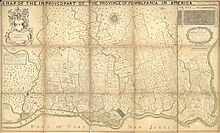| This article needs additional citations for verification. Please help improve this article by adding citations to reliable sources. Unsourced material may be challenged and removed. Find sources: "Moyamensing, Philadelphia" – news · newspapers · books · scholar · JSTOR (September 2018) (Learn how and when to remove this message) |
| Moyamensing | |
|---|---|
| Former Township | |
  | |
| Coordinates: 39°56′02″N 75°08′54″W / 39.93389°N 75.14833°W / 39.93389; -75.14833 | |
| Country | United States |
| State | Pennsylvania |
| County | Philadelphia |
| Time zone | UTC-5 (EST) |
| • Summer (DST) | UTC-4 (EDT) |
| Area codes | 215, 267, and 445 |

Moyamensing is an area of Philadelphia established as a Moyamensing Township during British colonial rule on the fast land of the Neck, lying between Passyunk and Wicaco. It was incorporated into Philadelphia County, Pennsylvania, United States and today encompasses several neighborhoods along the Moyamensing Avenue corridor in the South Philadelphia section of Philadelphia.
History
| Census | Pop. | Note | %± |
|---|---|---|---|
| 1830 | 6,822 | — | |
| 1840 | 14,573 | 113.6% | |
| 1850 | 26,979 | 85.1% |
The area was originally Lenape Nation land, and while one popular explanation given for the name Moyamensing is "place of pigeon droppings," linguist Raymond Whritenour links it to the Southern Unami word mwimënshink, meaning “place of wild black cherry trees.”
A tract identified by the stream Moyamensink Kill was granted in 1664 by the Dutch West India Company Lieutenant Alexander d'Hinoyossa, vice-director of New Amstel to Marten Roseman (aka Marten Cleinsmit), William Stille and Lawrence Andries, and a 1680 survey identified the nearby swampy area as Moyamensic Marsh. In 1684, when the land was turned over from the Dutch to the English, the title was given by William Penn to William Stille, Lassey Andrews, Andrew Bankson and John Matson.
Moyamensing Township included this ground and Wicaco, except such parts of the latter as were included in Southwark. Its northern boundary was South Street and below the existing parts of Southwark; its eastern boundary was the Delaware River, and its western boundary was Schuylkill Sixth (Seventeenth Street).
In 1816, the greatest length of Moyamensing was estimated to be three miles; the greatest breadth, two miles; area, 2,560 acres (10 km). By act of March 24, 1812, the inhabitants of Moyamensing were incorporated by the style of "the commissioners and inhabitants of the township of Moyamensing" and they even had their own police force. By act of April 4, 1831, the township was divided into East and West Moyamensing. The township was one of the earliest created after the settlement of Pennsylvania, and became part of Philadelphia in 1854.
The Moyamensing Prison was built between 1822 and 1835 at Reed and 10th Streets. A portion of it also housed a debtors' prison. The structure was demolished in 1967.
References
- Where Pennsylvania History Began (by Henry D. Paxon, The Swedish Colonial Society, 1926)
- Moyamensing (Philadelphia History) http://www.ushistory.org/philadelphia/incorporated.html
- Alotta, Dr. Robert I. (28 February 2011). "Rhyme, reason and much more behind names of Philly streets". whyy.org. WHYY, Inc. Retrieved 12 August 2024.
- Grumet, Robert S. (2014). "Beyond Manhattan: A Gazeteer Of Delaware Indian History Reflected In Modern-Day Place Names (New York State Museum Record 5)" (PDF). www.nysm.nysed.gov. The New York State Education Department. p. 89. Retrieved 12 August 2024.
- The Stille Family in America 1641–1772 (by Peter Stebbins Craig. Swedish American Genealogist - Vol. 6 No. 4 Dec 1986)
- Armstrong, E., ed. (1860). The Record of the Court at Upland, in Pennsylvania: 1671-1681. Philadelphia: J.B. Lippincott & Co. (for The Historical Society Of Pennsylvania). p. 100.
- The Pennsylvania State Archives (Minutes of the Board of Property of the Province of Pennsylvania.Page: 354 Series 2, Volume: XIX)http://www.footnote.com/image/3304731/
- Chronology of the Political Subdivisions of the County of Philadelphia, 1683-1854 http://www.phila.gov/phils/Docs/Inventor/graphics/wards/wards1.htm (Daly, John; Weinberg, Allen (October 1966). Genealogy of Philadelphia County Subdivisions (Second ed.). Philadelphia Dept. of Records.)
- "Moyamensing Township Police Department, PA".
- Incorporated District, Boroughs, and Townships in the County of Philadelphia, 1854 http://www.ushistory.org/philadelphia/incorporated.html
- http://www.library.upenn.edu/collections/rbm/photos/biswanger/poe-1849-philadelphia.html Raymond Biswanger collection at the University of Pennsylvania
Other sources
- Walther, Rudolph J. Happenings in Ye Olde Philadelphia 1680-1900 (Philadelphia, PA: Walther Printing House, 1925)
- Craig, Peter Stebbins Olof Persson Stille and his Family (Philadelphia, PA: Swedish Colonial News. Volume 1, Number 16. Fall 1997)